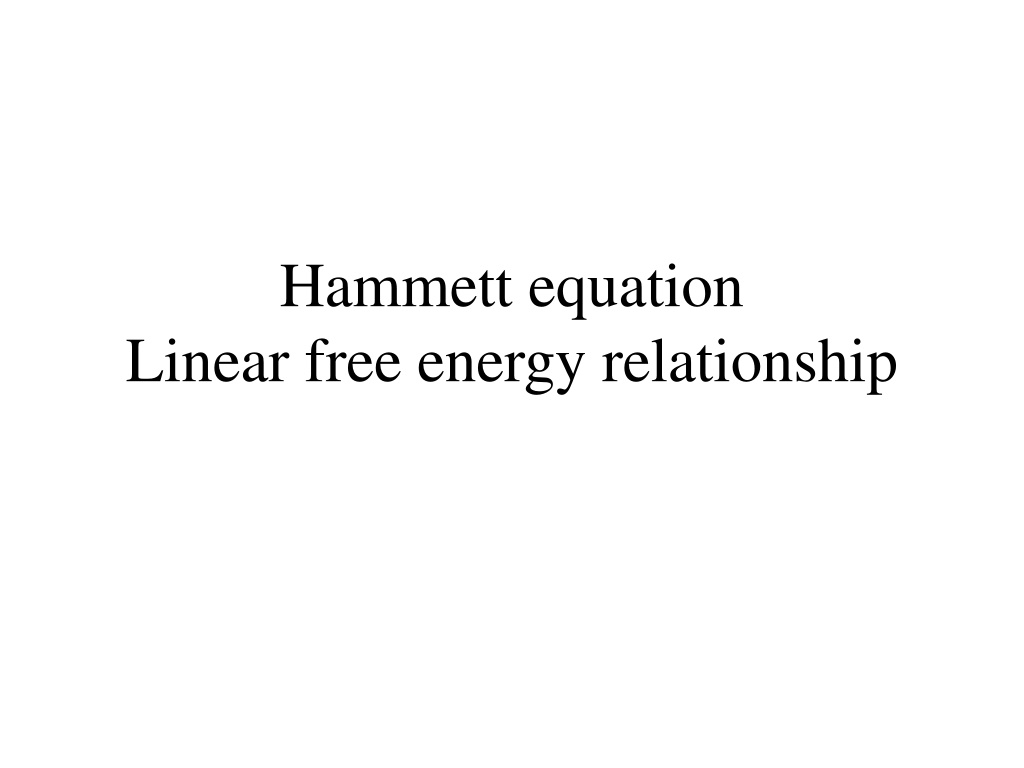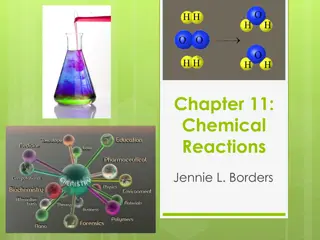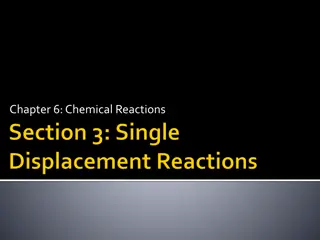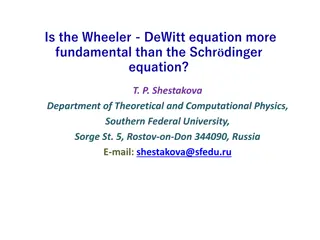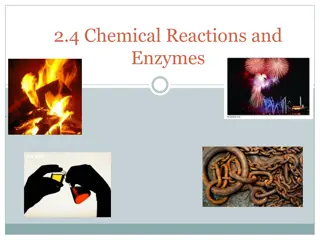Understanding the Hammett Equation in Chemical Reactions
The Hammett equation explores how substituents influence the dissociation of benzoic acid, affecting its acidity. By quantifying this influence through a linear free energy relationship, the equation helps predict the impact of substituents on different processes. Through parameter definitions and modifications, the equation can be applied to various equilibria, offering insights into reaction mechanisms and equilibrium shifts.
Download Presentation

Please find below an Image/Link to download the presentation.
The content on the website is provided AS IS for your information and personal use only. It may not be sold, licensed, or shared on other websites without obtaining consent from the author. Download presentation by click this link. If you encounter any issues during the download, it is possible that the publisher has removed the file from their server.
E N D
Presentation Transcript
Hammett equation Linear free energy relationship
Substituents can have a profound influence on the dissociation of benzoic acid. Thus substituents can have influence on the acidity of benzoic acid. Hammett equation attempts to quantify this influence of substituents. To derive a relation only the para subtituents are considered. Ortho substituents complicate due to steric influence as well. Meta substituents are not in through resonance with the carbonyl group of benzoic acid. Electron withdrawing group increases dissociation while electron donating decrease dissociation of benzoic acid. The influence is studied at a specific temperature (250C) and a specific solvent like water.
The relation may be derived as follows, If Gois the free energy change for the dissociation of substituted benzoic acid it must be a combination of free energy change of unsubstituted benzoic acid and the influence due to the substituent which can be represented as an equation A parameter is defined for each substituent in order to express the relation in more convenient form.
Thus the relation can be expressed as The relation between free energy and equilibrium constant is
Using the above relation and substituting in the first equation. This is the same as Thus substituents should influence similarly on other processes as well.
For example In the above dissociation though the influence of the substituent is the same but it is farther away from the reaction site. Hence the increment due to the substituent that is 2.303RT log which was appropriate for the dissociation of benzoic acid has to be modified by a factor which is characteristic of the sensitivity of the new reaction towards electron donation or withdrawal by the substituent. Hence the earlier equation is modified including the factor as,
This is called as Hammett equation. It can be applied to many other equilibria and the influence of the particular substituent on the equilibrium can be predicted. Which means the direction the equilibrium shifts and the strength of the acid can be assessed. Thus it is an important equation which is useful in obtaining information about reaction mechanisms.
Conclusions from the Hammett Plot A straight line plot obtained indicates that the free energy relation of the reaction is valid. The slope of the line is the of the reaction. A positive value of indicates that the reaction responds to substituent effects as in benzoic acid i.e., electron withdrawing groups increase dissociation and donating groups decrease dissociation. If > 1 then the reaction is more sensitive to the effects than in benzoic acid. For benzoic acid is taken as 1. If the value of is between 0 &1 then the effect is as in benzoic acid but lower. A negative value of indicates that the influence of the substituent is opposite to that of benzoic acid i.e., electron withdrawing groups decrease dissociation and electron donating groups increase dissociation. If the value of is very small, it indicates that the reaction may involve radical intermediate or a transition state. If the slope of the line changes abruptly it is an indication of change in mechanism as the substituents change.
